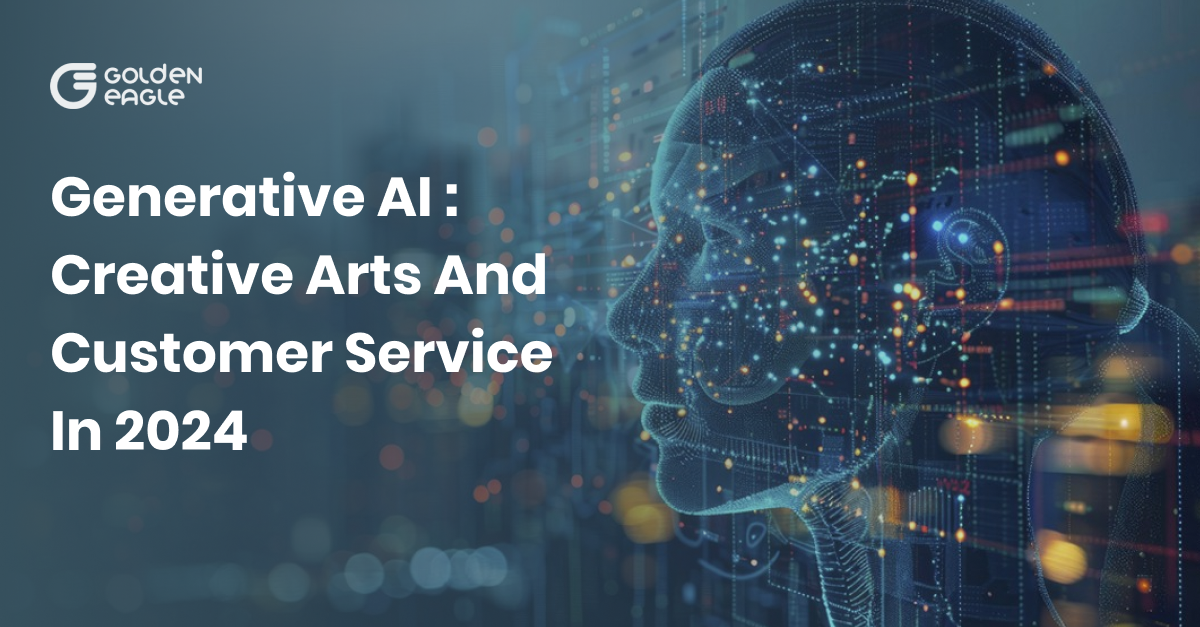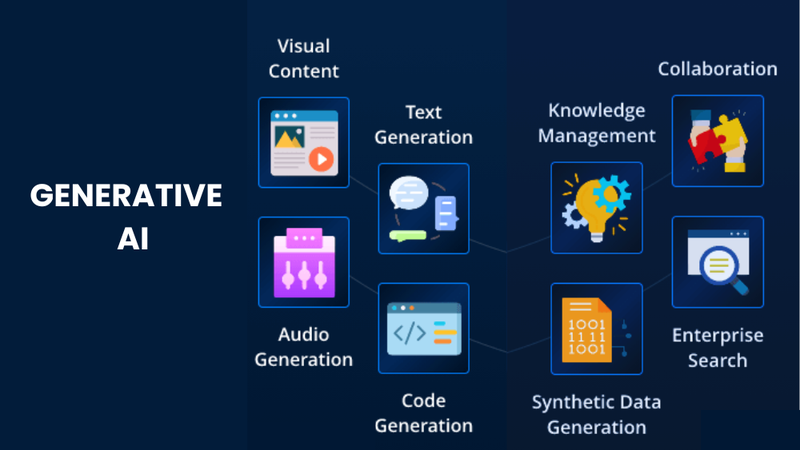
Generative AI, a powerful branch of artificial intelligence, is revolutionizing various industries, offering innovative solutions and reshaping traditional processes. This technology, characterized by its ability to generate new content and ideas, has gained significant attention for its applications in the creative arts, marketing, customer service, healthcare, and finance. In this blog, we'll explore how generative AI, such as the groundbreaking GPT-4, is making waves across these sectors.
Generative AI in the Creative Arts
The creative arts industry has witnessed a surge in the use of generative AI for art creation, music composition, and storytelling. Artists and designers are leveraging AI tools to generate unique artwork, blending different styles and techniques. For instance, AI-generated art can mimic famous artists or produce entirely new visual styles, making it a valuable tool for both professional artists and hobbyists.
Key Examples:
- AI-driven platforms like Artbreeder allow users to create new images by blending existing ones.
- Musicians use AI to compose music, generating new melodies and harmonies that were previously unimaginable.
These applications are not only democratizing access to artistic tools but also pushing the boundaries of creativity. As a result, generative AI is becoming an essential asset in the creative toolkit, enabling artists to experiment and innovate.

Marketing and Advertising Transformation
In the marketing and advertising world, generative AI is a game-changer. It helps businesses create personalized content, tailor marketing campaigns, and optimize ad placements. By analyzing consumer behavior and preferences, AI can generate targeted advertisements that resonate with specific audiences.
Key Benefits:
- Enhanced personalization: AI can craft messages that cater to individual preferences, increasing engagement rates.
- Efficient content creation: Marketers can use AI to generate blog posts, social media content, and email campaigns quickly.
- For example, tools like Copy.ai and Writesonic use AI to generate copy for various marketing materials, from product descriptions to ad headlines. This automation not only saves time but also ensures consistency across different platforms, improving brand messaging.
Further Read : How Voice User Interfaces Are Shaping the Digital Landscape in 2024
Revolutionizing Customer Service
Generative AI is also making a significant impact on customer service. AI-powered chatbots and virtual assistants are increasingly being used to handle customer inquiries, provide support, and streamline interactions. These systems can understand and respond to customer questions, providing accurate and timely information.
Key Applications:
- 24/7 customer support: AI chatbots can handle customer queries round the clock, providing immediate assistance.
- Personalized interactions: AI can analyze past interactions and tailor responses to individual customers.
For businesses, this means improved customer satisfaction and reduced operational costs. Companies like Zendesk and LivePerson are incorporating AI into their customer service platforms, enhancing the efficiency and effectiveness of customer interactions.
Innovations in Healthcare
The healthcare industry is another sector where generative AI is making strides. AI is being used for diagnostics, treatment planning, and medical research. For example, AI algorithms can analyze medical images to detect diseases, assist in surgical planning, and even predict patient outcomes.
Key Innovations:
- Early diagnosis: AI can identify patterns in medical data, enabling the early detection of diseases.
- Personalized treatment: AI can suggest personalized treatment plans based on patient data.
Additionally, generative AI is aiding in drug discovery by simulating chemical reactions and predicting the effectiveness of new compounds. This accelerates the development of new drugs and therapies, potentially saving lives and reducing costs.
Transforming finance and banking
In finance, generative AI is being utilized for risk assessment, fraud detection, and investment analysis. AI systems can analyze vast amounts of financial data, identify trends, and generate insights that help in decision-making.
Key Uses:
Fraud detection: AI can detect unusual patterns in transactions, preventing fraudulent activities.
Investment strategies: AI can generate investment recommendations based on market trends and historical data.
For instance, robo-advisors like Betterment and Wealthfront use AI to offer personalized investment advice, making financial planning accessible to a broader audience.
Conclusion
Generative AI is not just a technological trend; it's a transformative force reshaping various industries. From enhancing creativity in the arts to optimizing business operations in marketing, customer service, healthcare, and finance, the applications of generative AI are vast and diverse. As this technology continues to evolve, it will undoubtedly unlock new possibilities and opportunities.
The integration of generative AI into different sectors highlights its potential to improve efficiency, drive innovation, and create new experiences. As businesses and individuals embrace these advancements, we can expect to see even more groundbreaking applications emerge, further solidifying generative AI's role in the future of technology.